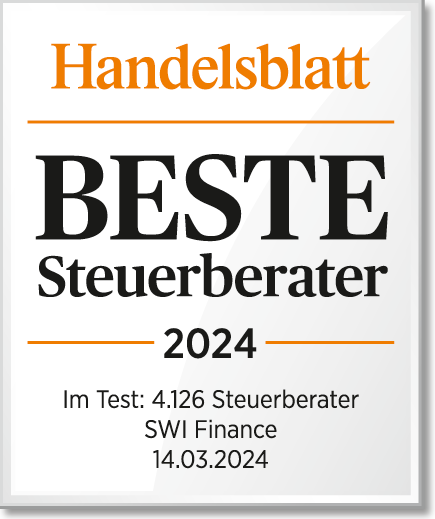b) Society
The purpose of an ESOP is to provide a benefit to the employee. If the virtual share in the company already has a certain value at the time of subscription and is also marketable, the employee must tax this value as wages. The wage tax has to be paid by the company, which puts a strain on liquidity. This can quickly run into the hundreds of thousands. It is therefore important to ensure that the tax-triggering moments are taken into account and immediate taxation is avoided.
The claim of those entitled to an ESOP is directed against the company, hereinafter referred to as GmbH. The GmbH must disclose this obligation in its annual financial statements. The initial creation, as well as the subsequent additions or reductions to the provision, must also be recorded in profit or loss with tax effect. If the start-up is already in the profit phase, the contributions can become tax-effective, meaning the taxable income will be lower. However, within the framework of Section 248 Paragraph 2 of the German Commercial Code (HGB), it is also possible not to book the additions at the expense of the commercial and tax results, but rather to book the expenses as production costs of an intangible asset (IP = intellectual property) and then this value depreciated for tax purposes from the time the IP is used. With this right to choose, German commercial law comes closer to international standards. According to IFRS, the capitalization of research and development services on IPs is mandatory. If a self-created intangible asset is capitalized based on the option in Section 248 of the German Commercial Code (HGB), the development costs must also be included, while research costs must always be treated as expenses.
If the activity of the ESOP beneficiary is aimed directly at the development of a product (“hardware”), there is no right to choose. Then his salary and thus also the addition to “his” pro rata provision must be capitalized.
If the GmbH does not have the means to fulfill the ESOP itself and it receives the funds, for example as part of the sale of shares from the shareholders (from their taxed income), the infusion of funds are, depending on the payer, either loans and therefore liabilities or deposits, to book equity capital. If the money comes from non-shareholders, such as obliged related companies or pure investors, you will have to check whether loans were granted (tax-neutral) or whether there was a gift. Then gift tax could apply. If customers, which can also include related companies, co-finance the ESOP out of their own sales interests, then the infusion of funds could also be assigned to the exchange of services and thus become relevant for VAT and income tax purposes.
c) Employees in Germany
In the case of pure stock options, the tax authorities and jurisprudence have so far assumed that taxation only takes place at the time the options are exercised at the then valid value. It is therefore largely agreed that stock options are taxable as income from employment and that the increase in value from the time of commitment is not taxed as a sale of shares - which would often be cheaper. Consequently, final taxation, ie taxation when the options are actually exercised, is practiced.
According to the BFH, however, an inflow can already exist when the options are granted, provided that the option right itself is marketable, i.e. the employees can also sell the rights. This is because an inflow takes place within the scope of the excess income of the EStG through obtaining economic control. Income is deemed to have been received at the point in time at which the recipient has or can dispose of it economically. The existence of the possibility of sale is sufficient for the inflow of the monetary benefit from real or fake “stock options”.
From the time of the tax inflow, at the latest from the exercise of the option right, the increase in value is no longer taxed as employment income, but rather as capital income upon sale.
From the time of the tax inflow, at the latest from the exercise of the option right, the increase in value is no longer taxed as employment income, but rather as capital income upon sale. This was recently confirmed by the BFH in its judgment of October 4.10.2016, 43 - IX R15/25.1.2017, published on January XNUMX, XNUMX
d) Employees with international assignments
ESOPs are often offered to employees who contribute to success through a stay abroad, for example by being posted to a foreign affiliated company. If the activity associated with the ESOP is physically carried out in other countries, it must be checked according to the criteria of the respective double taxation agreement which country has the right to tax which partial amount. According to most agreements, Germany must then exempt the part taxed abroad.
The BMF letter of November 12.11.2014, XNUMX on the taxation of wages according to the double taxation agreements represents the view of the German tax administration, which is not entirely the correct one and is also not internationally coordinated with the contracting countries.
The domestic exemption is only granted to people who are subject to unlimited tax liability in Germany at the time of exercise (usually upon exit) if they can prove that they have been taxed abroad or can prove that they have disclosed the income to the responsible tax authorities, but the latter can see it Eyes have waived taxation. This results from Section 52d Paragraph 9 EStG. Beneficiaries who are no longer living in Germany at the time of exercise are not subject to unlimited tax liability, but may only be subject to limited tax liability. You can be taxed on the proceeds from the ESOP in accordance with Section 49 Paragraph 1 No. 4 EStG in Germany (proportionally if necessary, see above) if and to the extent that the proceeds are attributable to the physical exercise of work.







